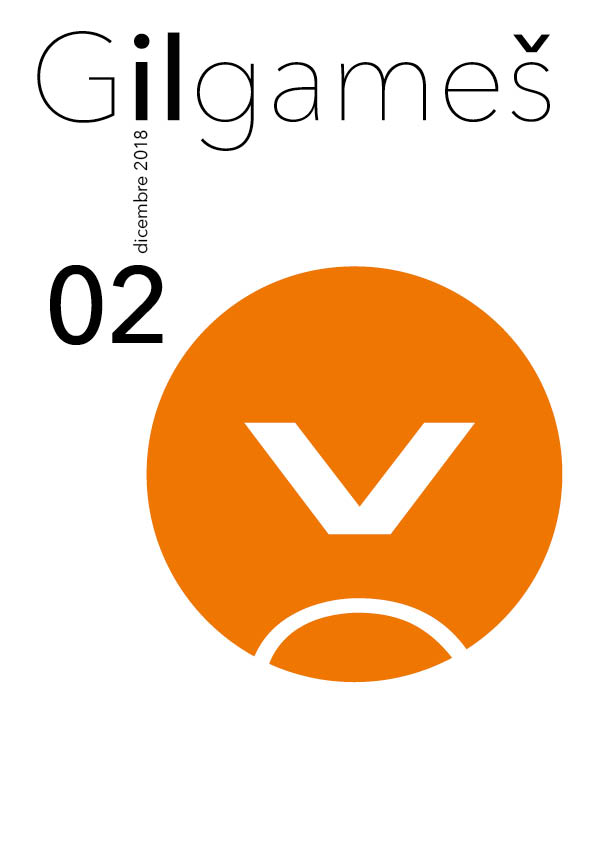The semiotics and politics of the female body: A comprehensive analysis of Elfen Lied and its opening song
DOI:
https://doi.org/10.13130/2531-9515/11221Аннотация
This paper develops an exhaustive analysis of the Japanese animation series Elfen Lied (2004) and its opening song, “Lilium”, which is an exceptional case within its field of production because its lyrics are written in Latin. The purpose of my analysis is to determine if “Lilium” and its visual presentation really have something to do (thematically and stylistically) with the series it presents, or not. My hypothesis is that "Lilium", both in its musical level and in its visual presentation, fulfils all the formal characteristics of both a lied and an overture; and, given the latter, anticipates core thematic and stylistic elements of the work it precedes. Moreover, it even subtly anticipates the ideological content of the series, which consists of a critical reading of gender roles and feminism in contemporary Japanese and global society. To demonstrate these hypotheses, I made a detailed analysis of Elfen Lied, paying special attention to its animated adaptation but not ignoring its original manga version; and then I analyzed "Lilium" in its three aspects: its visual presentation, its lyric and its musical score. I have analyzed and emphasized how the abundant intertextualities present in "Lilium" were productive for creating music and for transmitting the artistic and ideological content present in the series. The paper adopts an interdisciplinary perspective, and uses theoretical tools from the fields of semiotics, intertextuality, and reception theory.
Библиографические ссылки
Balmain 2009
C. Balmain, Introduction to Japanese horror film, Edinburgh University Press, 2009.
Barber 2009
C. L. Barber, The displaced self in Elfen Lied, «The International Journal of Humanities», VI (11), 2009.
Barthes 1984
R. Barthes, Le bruissement de la langue, Paris, Seuil, 1984.
Chevalier–Gheerbrant 1986
J. Chevalier, A. Gheerbrant (eds.), Diccionario de los símbolos, Barcelona, Herder, 1986.
Firestone 1971
S. Firestone, The dialectic of sex. The case feminist revolution, New York, Bantam Books, 1971.
Fliedl 1998
G. Fliedl, Gustav Klimt: the world in female form, Taschen, 1998.
Genette 1988
G. Genette, Seuils, Paris, Seuil, 1988.
Grice 1975
H. P. Grice, Logic and conversation, in P. Cole, and J. L. Morgan (eds.), Syntax and Semantic. Speech Acts, New York, Academic Press, 1975, pp. 41-58.
Grove 1880
G. Grove (ed.), A dictionary of music and musicians, London, Macmillan, 1880.
Hirschi 2000
G. Hirschi, Mudras: Yoga in your hands, Weiser, 2000.
Hoek 1981
L. Hoek, La marque du titre: dispositifs sémiotiques d’une pratique textuelle, La Haye, Mouton, 1981.
Kunesh 1990
T. P. Kunesh, The pseudo-zygodactylous gesture of the lactating goddess: evolution and migration. Thesis. 1990. http://www.darkfiber.com/pz/ [Last access: October the 3rd, 2017].
Lahlou 1989
N. Lahlou, The poetics of titles: further discriminations, «Occasional Papers» (2), Wolverhampton, PALA, 1989.
Lenneberg 1958
H. Lenneberg, Johann Mattheson on affect and rhetoric in music (II), «Journal of Music Theory», II (2), 1958, pp. 193-236.
Mattheson 1713
J. Mattheson, Das neueröffnete Orchestre, Hamburg, Benjamin Schiller, 1713.
Matsui 2002
M. Matsui, The place of marginal positionality: legacies of Japanese anti-modernity, in F. Lloyd (ed.), Consuming bodies: sex and contemporary Japanese art, London, Reaktion, 2002, pp. 142–65.
Menen 2013
R. Menen, The healing power of Mudras, the Yoga of the hands, Pustak Mahal, 2013.
McRoy 2005
J. McRoy (ed.), Japanese horror cinema, Edinburgh University Press, 2005.
McRoy 2008
J. McRoy, Nightmare Japan. Contemporary Japanese horror cinema, Amsterdam, Rodopi, 2008.
Okamoto 2002-2005
R. Okamoto, Erufen rīdo, Tōkyō, Shūeisha, 2002-2005.
岡本倫 「エルフェンリート」 集英社、 東京、 2002-2005.
Pinedo 2004
I. C. Pinedo, Postmodern elements of the contemporary horror film, in S. Prince (ed.), The horror film, Rutgers University Press, 2004, pp. 85-117.
Prieto Domínguez 2008
O. Prieto Domínguez, ¿Qué era un centón para los griegos? Preceptiva y realidad de una forma literaria no tan periférica, «Myrtia», (23), 2008, pp. 135-155.
Prince 2004
S. Prince, Introduction: The dark genre and its paradoxes, in S. Prince (ed.), The horror film, Rutgers University Press, 2004, pp. 1-11.
Smith 2003
P. F. Smith, The Dynamics of Delight: Architecture and Aesthetics, New York, Routledge, 2003.
Wolf 1926
H. Wolf, Gedichte von Eduard Mörike, Leipzig, C. F. Peters, 1926.
Загрузки
Опубликован
Выпуск
Раздел
Лицензия
Gli autori mantengono il diritto sui propri lavori, cedendo in via non esclusiva a Gilgameš il diritto di pubblicazione.
Gilgameš è distribuito con Licenza Creative Commons Attribuzione - Non commerciale 4.0 Internazionale.



